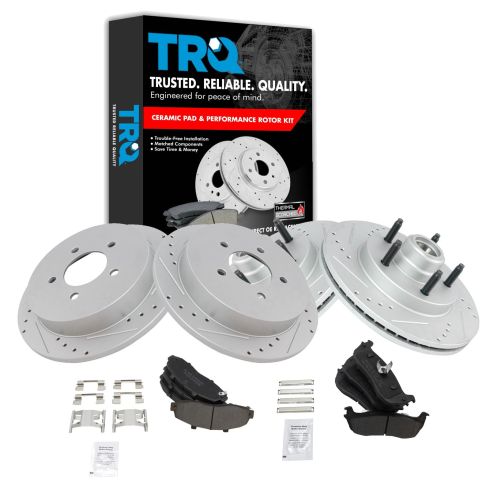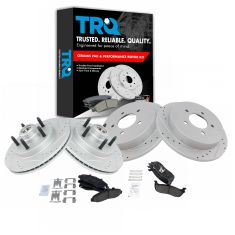1APBS01032-Ford Lincoln Front & Rear Semi-Metallic Performance Brake Pad & Rotor Kit TRQ Performance BKA12782

Replaces
2002 Lincoln Blackwood Front & Rear Semi-Metallic Performance Brake Pad & Rotor Kit TRQ Performance BKA12782

Product Reviews
Loading reviews
There are no reviews for this item.
Customer Q&A
What is the finish on the rotors?
June 13, 2021
10
It is a Premium G-Coating.
June 14, 2021
Cristina P
Is ceramic brake better than semi matallic brakes?
January 15, 2024
10
Ceramic brake pads are better suited for daily driver commuter cars, semi metallic pads are typically better suited for performance vehicles (race applications) and tow vehicles. Both will work in either application but if Im installing pads on my daily driver Im going to use ceramic as they are quieter and produce less brakes dust (imo)
January 15, 2024
Timothy J
10
Yes
January 16, 2024
Emily W
10
Yes
January 16, 2024
John D
Lincoln is a registered trademark of Ford Motor Company. 1A Auto is not affiliated with or sponsored by Lincoln or Ford Motor Company.
See all trademarks.




















